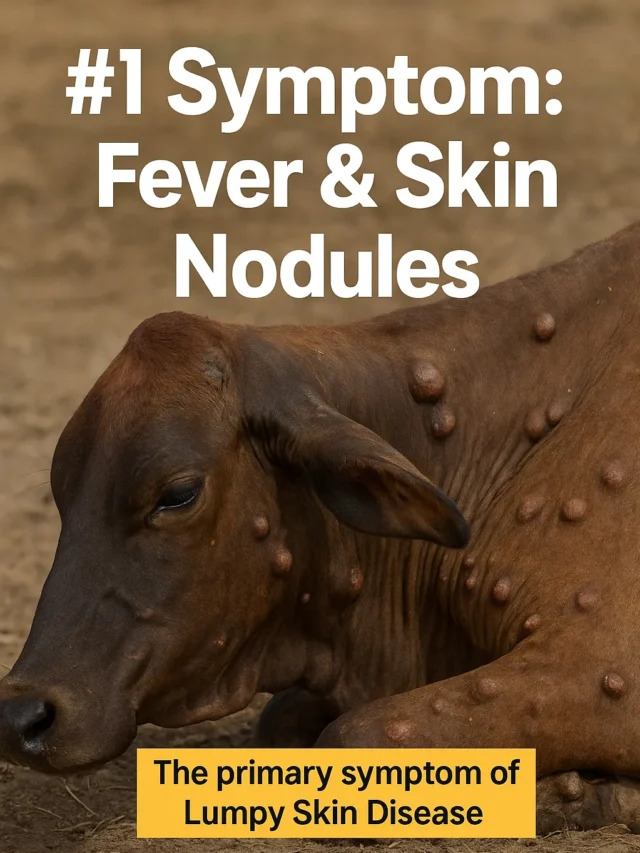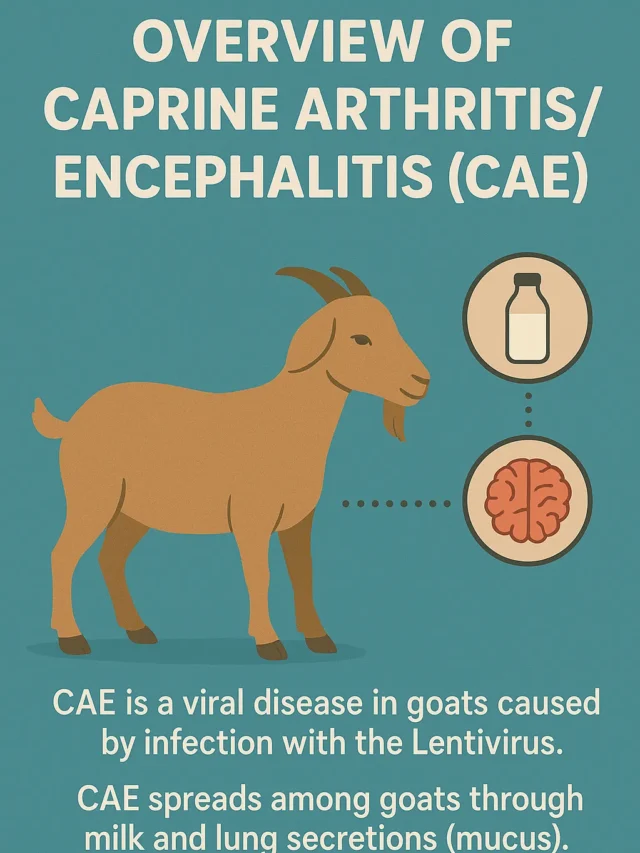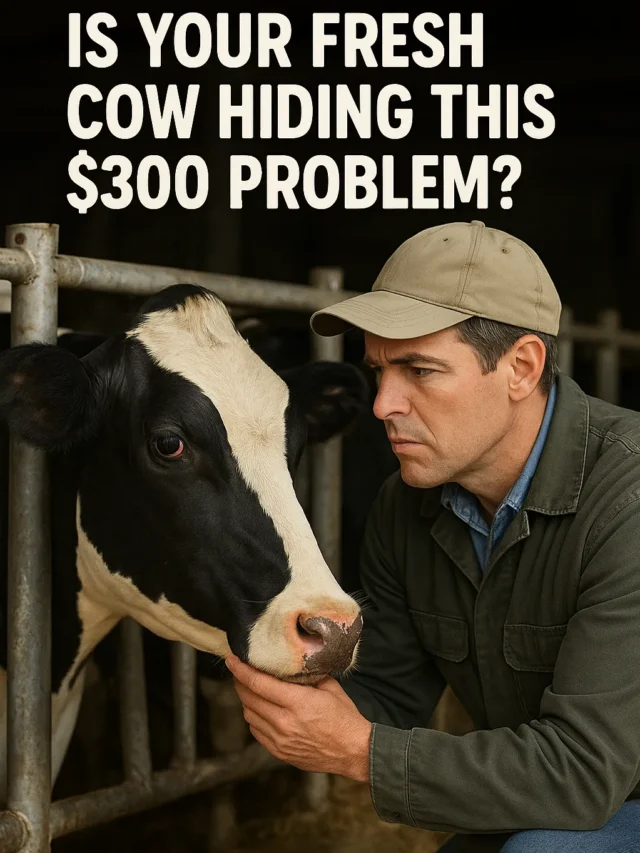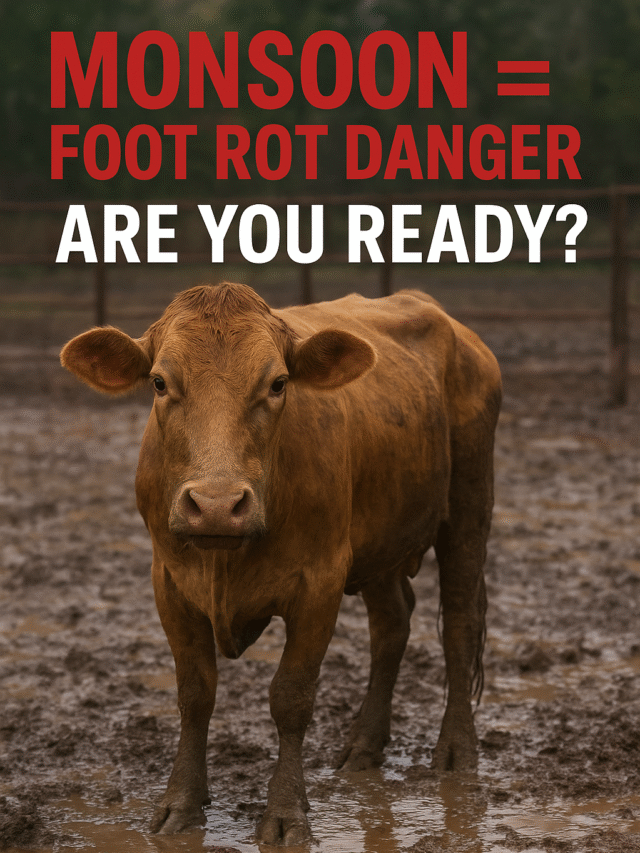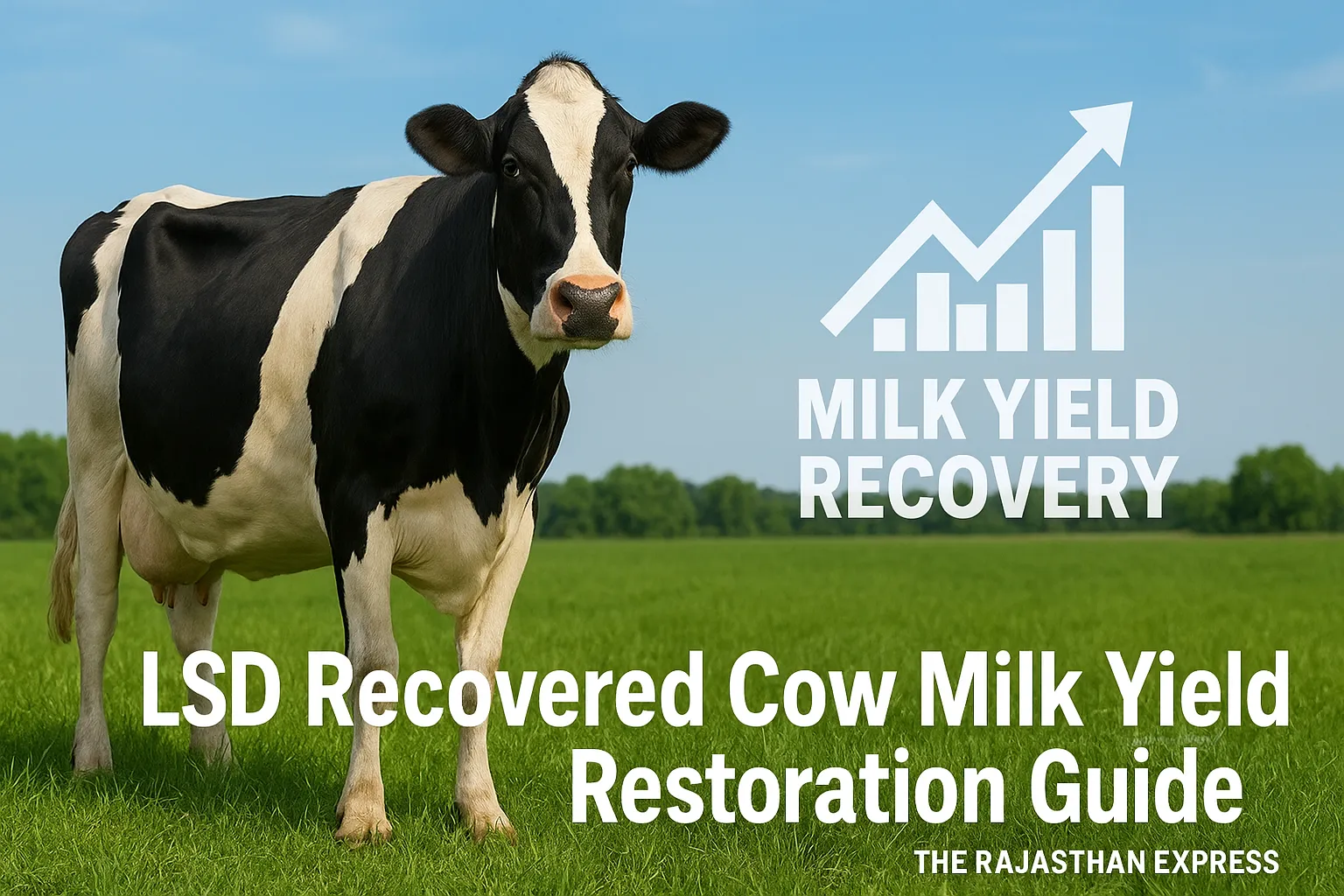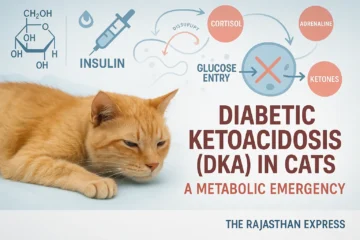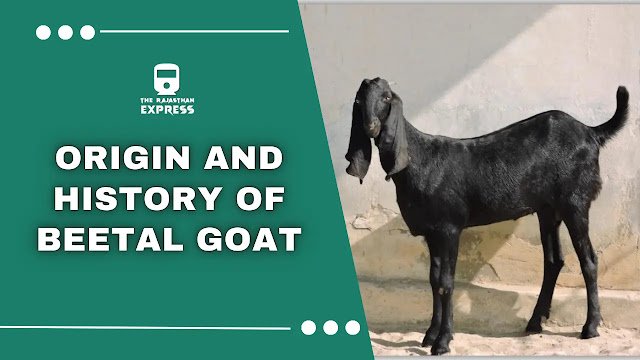LSD Recovered Cattle Milk Yield Restoration: A Comprehensive Guide to Boosting Milk Production After Lumpy Skin Disease
Lumpy Skin Disease (LSD) is a viral disease that primarily affects cattle and buffaloes. This disease is not a danger to humans, but it has serious economic losses for livestock farmers. It is caused by the Lumpy Skin Disease Virus (LSDV), which is a member of the Poxviridae family, Chordopoxvirinae subfamily, and Capripoxvirus genus. Capripoxvirus is also called Neethling virus. Lumpy Skin Disease is an acute disease that affects animals for 3 to 15 days.
This is a cattle disease in which symptoms like fever, lumps (nodules) on the skin/mucous membranes/internal organs, physical weakness, swelling of lymph nodes, inflammation of the skin (edema), and sometimes death are seen. The emergence of lumps on the animal’s skin is the primary identification of this disease, which causes the animal to suffer with severe inflammation. Along with this, high fever, inflammation in the respiratory tract, and lameness in the legs are observed in the animal.
Lumpy Skin Disease (LSD)
| Disease Name | Lumpy Skin Disease (LSD) |
|---|---|
| Other Names / Synonyms | Neethling Virus Disease, Pseudo-lumpy Skin Disease (PLSD) is a separate, milder condition caused by a herpes virus. |
| Pathogen |
Lumpy Skin Disease Virus (LSDV) – Family: Poxviridae – Subfamily: Chordopoxvirinae – Genus: Capripoxvirus. |
| Causes | Infection with the Lumpy Skin Disease Virus (LSDV), a large, double-stranded DNA virus. It is environmentally stable but sensitive to most disinfectants. |
| Pathology | The virus causes systemic infection, characterized by fever and cutaneous nodules. It targets the skin and mucous membranes, leading to vasculitis and necrosis. Secondary bacterial infections are common in the lesions. |
| Symptoms |
|
| Transmission |
|
| Risk Factors |
|
| Diagnosis |
|
| Treatment Options |
|
| Prevention Methods |
|
| Complications |
|
| Prognosis | Mortality rate is usually low (1-5%) but can be higher in severe outbreaks. Most animals recover over several weeks, though productivity losses can be prolonged |
| Economic Impact / Production Losses |
LSD causes significant economic losses due to:
|
| Frequency / Prevalence | Historically endemic in sub-Saharan Africa. Since 2015, it has spread through the Middle East, Balkans, Asia, and, as of 2025, has caused outbreaks in the European Union (Italy and France). |
| Affected Populations |
Species: Domestic cattle and Asian water buffaloes. Not transmissible to humans. Breed Susceptibility: Bos taurus (exotic breeds) are more susceptible than Bos indicus (local breeds). |
| History / Discovery | First described in Zambia (then Northern Rhodesia) in 1929. It has since spread beyond Africa, with major epidemics in the Middle East, Europe, and Asia since the 2010s |
| Related Fields / Specialties | Veterinary Medicine, Epidemiology, Livestock Management, Virology, Public Health Economics. |
| Sources: The World Organisation for Animal Health (WOAH), European Commission Food Safety, peer-reviewed scientific journals (PubMed, PMC), and The Rajasthan Express. | |
In India, this disease was first recorded in the state of Odisha. Lumpy Skin Disease (LSD) affected more than 4 lakh cattle in Rajasthan, where the mortality rate was quite high. In Rajasthan alone, nearly 50,000 cows died, which demonstrates the lethality of this disease. For this reason, the World Organisation for Animal Health (WOAH) declared it a disease of the Epizootic category. Epizootic diseases affect a large number of animals over a wide area. Bos taurus species of foreign cows are more susceptible to this disease compared to Bos indicus, i.e., Indian native breeds. Asian buffalo (Bubalus spp.) can also be affected by this disease.
The Impact of Lumpy Skin Disease on Dairy Herds
Heavy Decline in Milk Production
A significant and immediate reduction in milk production is observed in animals infected with LSD. According to one study, farms with an LSD outbreak face problems like a decrease in milk sales and having to discard milk due to the use of antibiotics, causing significant economic loss per farm. Because when antibiotics are used in animals infected with LSD, traces of antibiotics appear in their milk for 3-7 days, which can be harmful.
During an outbreak in Thailand, dairy farms had to bear a loss of 8.23 to 9.96 tons of milk every month, resulting in a total economic loss of 24,13,000 Thai Baht (approximately 68,943 US Dollars).
Level of Production Decrease
According to cases reported in India, a cow recovering from LSD can experience a 50-70% reduction in milk production. A 30% decline in milk production was recorded in Bihar’s Begusaray district due to this disease. In some cases, a cow that previously gave 10-12 liters of milk, after the illness, is able to give only 2-2.5 liters of milk.
As seen in 2022 in India’s Rajasthan state, where the death of nearly 50,000 cows caused severe economic losses for local livestock farmers. This disease can cause a temporary reduction in milk production, temporary/permanent infertility in bulls, skin damage (which reduces the value of the hide), and death.
Health-Related Complications
After the disease, secondary health problems like mastitis (inflammation of the udders) and pneumonia can arise in animals, which long-term affect the production and quality of milk. Additionally, the sick animal’s immune system becomes weak, increasing the risk of other infections.
Boosting Milk Production After Lumpy Skin Disease: Scientific Advice
To re-increase milk production in animals after recovering from LSD, it is necessary to adopt an integrated approach, which includes nutrition, health management, and housing. Raising dairy animals correctly and obtaining maximum milk production from them is the dream of every livestock farmer. If your cow gives 25-30 liters or even more milk, then its care and diet management become even more important. This article will provide you with information on a scientific and balanced diet plan, which will keep your cow healthy and give you better production.
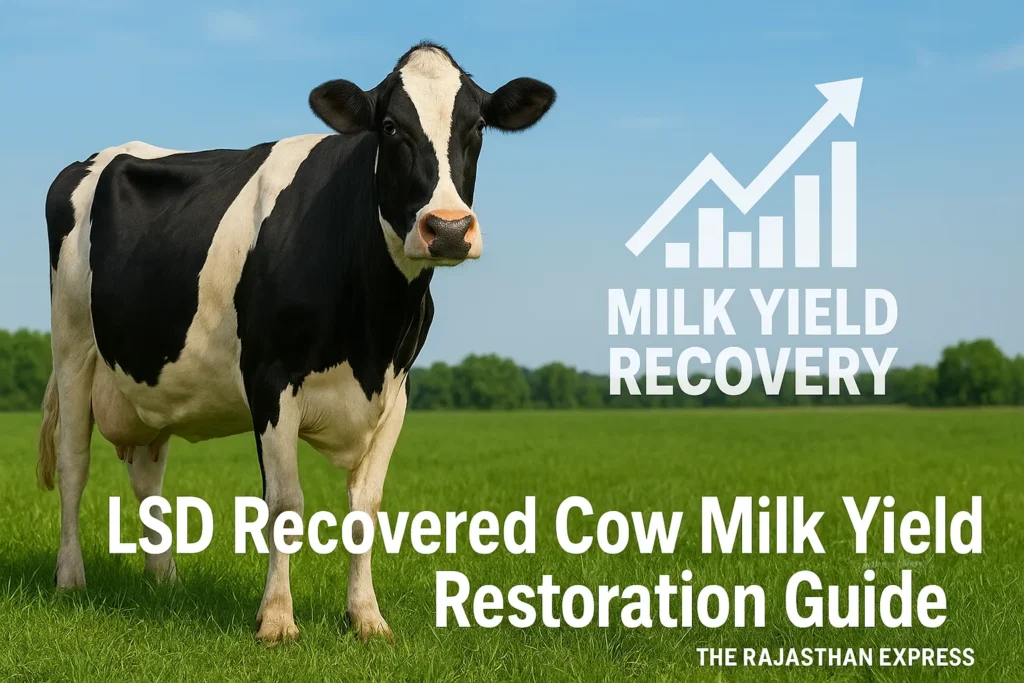
Nutritional Management for LSD Recovered Cows: A Diet Chart for High Milk Production
Given below is a rough daily diet chart for a cow weighing approximately 500 kg and giving 25-30 liters of milk. This is a general guide; the exact quantity depends on the cow’s precise condition.
| Nutritional Management for LSD Recovered Cows: A Diet Chart for High Milk Production | ||
| Food Item | Quantity (Daily) | Special Notes |
|---|---|---|
| Green Fodder (e.g., Lucerne, Berseem) | 25 – 30 kg | The main source of nutrition. Provide fresh, good quality fodder. |
| Dry Fodder (e.g., Straw, Wheat Bran) | 3 – 4 kg | Essential for the digestive system, but do not give in large quantities. |
| Concentrate Mixture (Grains) | 7.5 – 9.0 kg | Rule: Usually, 1 kg of grains is given for every 2-2.5 liters of milk. Change quantity according to production. |
| Mineral Mixture | 50 – 75 grams | Calcium and Phosphorus are essential for bones and milk. |
| Salt | 30 – 50 grams | Necessary for the animal’s appetite and overall health. |
| Clean Water | 35 – 40 liters | Sufficient water is extremely important for milk production and health. |
| The Rajasthan Express : LSD Cow Nutritional Management | ||
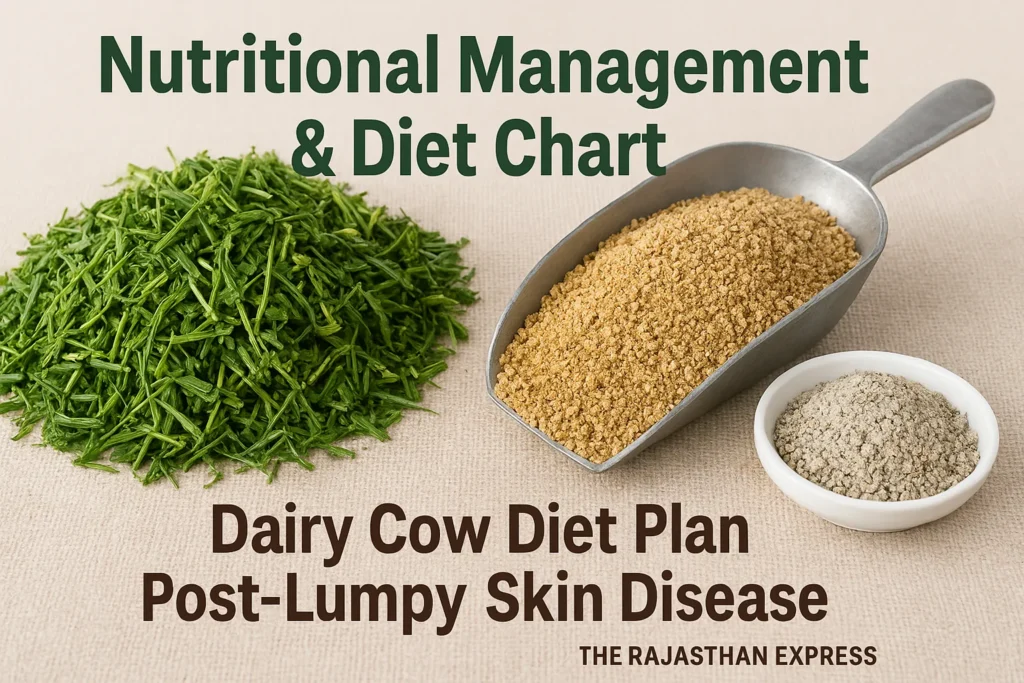
Main Principles of a Balanced Diet for Dairy Cattle Feed Post-Lumpy Skin Disease
Just giving food is not enough; it is essential that it is nutritious and balanced. Let’s understand what should be included in an ideal diet:
- Energy (Carbohydrates): Energy is the most essential for the cow’s daily functions and for making milk. Green fodder, grass, and grains are good sources of energy.
- Protein: This is necessary for building muscles and milk. Soybean, peanut cake, cottonseed cake, and mustard cake are excellent sources of protein.
- Minerals and Vitamins: Calcium and Phosphorus are essential for bones and milk quality, while Vitamins A, D, E are necessary for increasing immunity. Their requirement is met by the mineral mixture. Providing Calcium and Phosphorus minerals in the diet can prevent metabolic diseases like Milk Fever, Downer Cow Syndrome, and Postpartum Hemoglobinuria.
- Magnesium (Mg): Essential for enzyme function and carbohydrate metabolism. Deficiency leads to reduced milk production and reproductive capacity.
- Trace Minerals: Copper (Cu), Zinc (Zn), Selenium (Se): These elements are naturally present in fodder in small quantities. Zinc is essential for the health of the skin and hooves, while Selenium deficiency leads to weak calves being born.
- Correct Ratio of Fodder and Concentrate: Approximately ⅔ (two-thirds) of a healthy animal’s total diet should come from roughage (green + dry fodder) and ⅓ (one-third) from the concentrate mixture. This ratio keeps the animal’s stomach healthy. This can prevent metabolic diseases like Ketosis and Hypoglycemia. Because these diseases mainly occur due to an imbalance in the fodder:concentrate ratio or a disruption in carbohydrate metabolism.
Digestive Enzymes – Utilizing Dietary Nutrients
This is new research that increases the digestibility of animal feed:
How they work:
- Animal feed contains elements like cellulose, xylan, hemicellulose, cellulose, beta-glucan, which are difficult to digest.
- Enzymes break down these tough elements and release nutrients.
- This reduces viscosity in the intestines and increases the absorption of nutrients.
Main Enzymes:
- Cellulase: Breaks down cellulose
- Xylanase: Breaks down xylan
- Pectinase: Breaks down pectin
- Phytase: Breaks down phytate and releases Phosphorus
Method of Use:
- Can be mixed directly into the feed
- Probiotics like Bacillus subtilis also produce these enzymes
How to Prepare a Concentrate Mixture?
When preparing the concentrate mixture, keep in mind to mix different types of grains and cakes. This improves both the quality and taste of the mixture. You can prepare a balanced concentrate mixture by mixing the following items:
- Sources of Energy: Maize, Barley, Wheat Bran.
- Sources of Protein: Soybean cake, Peanut cake, Cottonseed cake, Gram powder.
- Minerals and Vitamins: Mineral mixture and salt.
Important Animal Management Habits for Increasing Milk Quality in LSD Affected Cattle
Along with the right diet, good care habits are equally essential:
- Feed at Fixed Times: Feed the animal 3-4 times a day in small amounts. Keep the time fixed and do not change it frequently.
- Do Not Make Sudden Changes in Diet: If a change is necessary, do it gradually by mixing it with the old feed.
- Maintain Cleanliness: Keep feeding utensils and water tanks clean. The animal’s living area should be dry and clean.
- Adopt TMR (Total Mixed Ration): If possible, mix all the food (green fodder, dry fodder, concentrate) together and feed it. This gives the animal equally nutritious food every time and reduces fodder wastage.
Precautions
- Never give the animal finely ground concentrate. If grains are visible in the dung, it means the feed is not being digested properly.
- Always maintain some quantity of dry fodder (straw) in the animal’s diet, not just green fodder alone.
- Before starting any new feed or remedy, always consult your local veterinarian or animal nutrition specialist. They can provide the right guidance according to your cow’s individual needs.
Summary: A high milk production cow needs not just more food, but nutritious, balanced, and regular diet. The correct ratio of fodder and concentrate, sufficient water, and good care are the keys to successful animal husbandry.
Herbal Supplements: A Scientific Perspective on Traditional Remedies
Some traditional methods like including fenugreek, carom seeds, and jaggery in the diet have been found beneficial. Mixing wheat flour in mustard oil and feeding it is also a prevalent method. A desi recipe can also be adopted to increase the animal’s strength, in which grind 10 betel leaves, 10 grams black pepper, 10 grams turmeric, salt, 10 basil leaves, 10 bay leaves, one handful each of neem and bael leaves to make a paste and mix a little jaggery in it and feed it to the animal.
| Herbal Supplements: A Scientific Perspective on Traditional Remedies | |||
| Herbal | Traditional Use & Scientific Evidence | Precautions | Source |
|---|---|---|---|
| Fenugreek (मेथी) | Traditional: Considered a galactagogue (milk-increasing herb). Scientific: Studies (150–250g/day) show possible improvement in milk yield and metabolic health, though results vary. | Start with a small dose (50–150g/day) and monitor the animal’s response. | LUVAS Journal, 2023 | NCBI (PMC) |
| Carom Seeds (अजवाइन) | Traditional: Helps with gas and indigestion. Scientific: Contains Thymol that aids digestion and kills germs; shown to improve feed efficiency and gut health. | Give in very small amounts (a few grams/day). Excess may cause irritation. | ResearchGate Review | NCBI (PMC) |
| Jaggery (गुड़) | Traditional: Boosts taste and energy. Scientific: Does not directly increase milk yield but improves feed intake and palatability when added (1–2%) to feed or silage. | Excess may cause obesity or metabolic issues. | PubMed | TNAU Agritech Portal |
| Mustard Oil + Wheat Flour (सरसों का तेल + गेहूं का आटा) | Traditional: Given for strength and energy. Scientific: Mustard cake has proven protein value; raw oil-flour mix lacks studies. | Excess raw mustard oil may irritate the stomach. Prefer processed mustard cake. | ICAR Research | ScienceDirect |
| Betel Leaf (पान का पत्ता) | Traditional: Improves digestion and strength. Scientific: Has antioxidant and antimicrobial properties; some studies show topical use as antiseptic (e.g., teat dip). | Use in limited amounts; large-scale safety data lacking. | NCBI (PMC) |
| Black Pepper (काली मिर्च) | Traditional: Improves digestion and nutrient absorption. Scientific: Piperine enhances nutrient and drug absorption; animal studies show improved digestion and immunity. | Use in small quantities; excess can cause irritation. | PubMed | NCBI (PMC) |
| Turmeric (हल्दी) | Traditional: Used for infection prevention and inflammation reduction. Scientific: Curcumin acts as antioxidant and anti-inflammatory; improves liver protection and milk quality. | Effect is enhanced when combined with black pepper. | NCBI (PMC) |
| Holy Basil (तुलसी) | Traditional: Boosts immunity and digestion. Scientific: Shown to have antibacterial and anti-inflammatory effects; supports healthy rumen microbiota. | Safe in normal quantity; excess may cause discomfort. | NCBI (PMC) |
| Bay Leaf (तेजपत्ता) | Traditional: Helps digestion and reduces inflammation. Scientific: Shown to have antioxidant and antimicrobial effects in lab and human studies; limited animal data. | Excess may cause stomach upset. | Wiley Online Library |
| Neem (नीम) | Traditional: Used to control parasites and insects. Scientific: Exhibits antimicrobial and antiparasitic properties; large doses may be toxic. | Do not give to pregnant cows or calves. Use in moderation. | Feedipedia | NCBI (PMC) |
| Bael Leaves (बेलपत्र) | Traditional: Supports digestion and controls diarrhea. Scientific: Contains antioxidants and digestion-enhancing compounds; some positive results in cow/buffalo studies. | Avoid in pregnant animals due to possible reproductive effects. | Pharmacognosy Journal | NCBI (PMC) |
| The Rajasthan Express : Herbal Remedies & Scientific References | |||
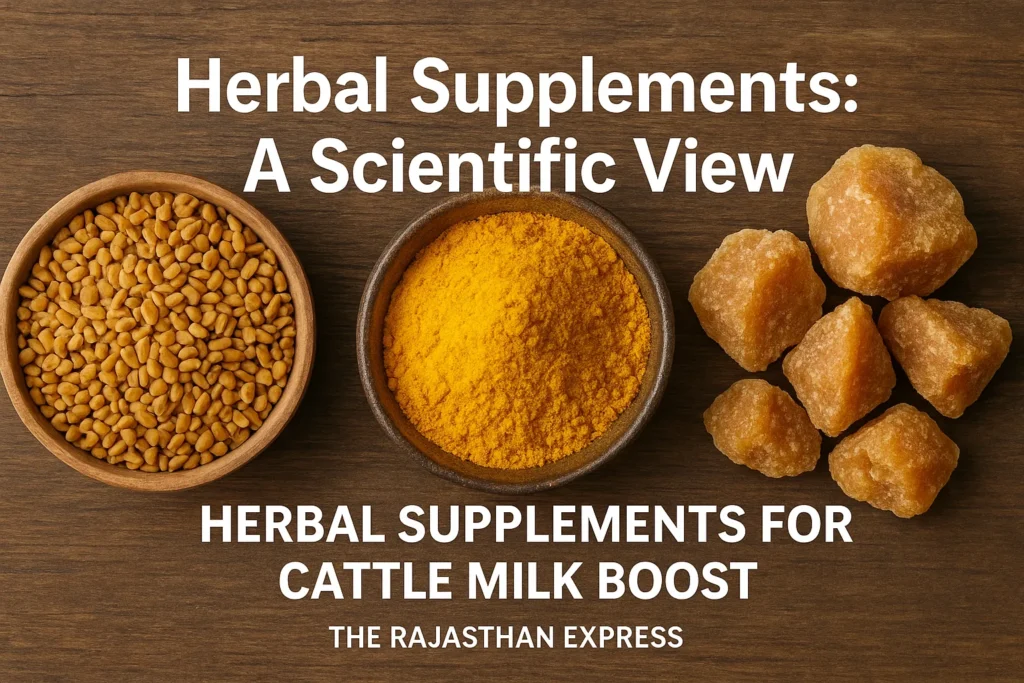
Practical Method (How to Administer)
- Always start with a small quantity (micro-dose) and observe the cow/buffalo carefully for 1-2 weeks.
- Fenugreek: 50–150 grams/day
- Carom Seeds: 2–5 grams/day
- Black Pepper: A pinch (1–2 grams/day)
- Jaggery: 20–50 grams/day
- The correct dosage will depend on the region, breed, and quantity of milk.
- Always ask a veterinary doctor before giving to a pregnant cow, new calf, or sick/medicated cow.
Main Point:
- These herbal mixtures are supportive boosters for increasing milk or providing strength.
- Herbs can help, but real milk will only increase when the main food TMR (Total Mixed Ration = Green Fodder + Dry Fodder + Concentrate + Mineral + Clean Water) is balanced.
Caution
- Neem and Bael leaves can be harmful in large quantities.
- Excessive Neem can cause toxic effects.
- There are reports of reproductive effects in pregnant animals from Bael leaves.
- Therefore, do not administer these regularly without the advice of a Veterinary Doctor.
Health and Medical Care for Long-Term Recovery
Controlling Secondary Infections
The immunity (disease resistance capability) of an animal suffering from Lumpy Skin Disease (LSD) becomes weak.
During such times, common diseases (like pneumonia, mastitis, diarrhea, etc.) can easily infect the animal.
Therefore, the animal should be given immunomodulators and tonics:
- Vitamin C and Vitamin E → Antioxidants, strengthen the immune system.
- Levamisole (As per Vet advice) → Activates immunity.
- Liver Tonic and Multivitamin Syrup → Bring back the animal’s strength and appetite.
To protect against parasites (worms, insects, and germs), deworming should be done 3-4 times a year with different medicines (like Triclabendazole, Oxy-Clozanide, Praziquantel, Albendazole, Fenbendazole).
Regular Health Check-up
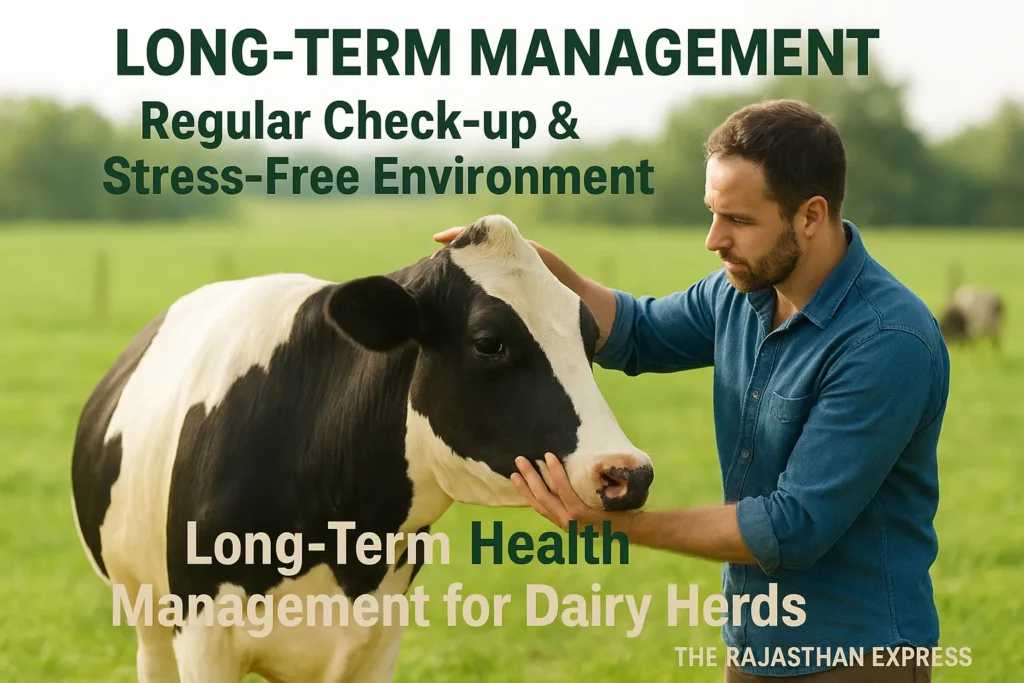
Conduct a daily inspection of the sick animal:
- Check if milk production, appetite, body temperature, breathing rate, and feces-urine are normal or not.
- Maintain the Body Condition Score (BCS) at 3. (Meaning the animal should not be too thin, nor too fat).
- Get a health check-up done by a nearby veterinarian every 15-30 days.
- Stress-Free Environment: The animal’s living space should be clean, dry, and airy. Milk production is better in a stress-free environment. Maintain cleanliness of the animal shed and spray insecticides to prevent mosquitoes and flies.
- Adopt a regular deworming program.
- Maintain cleanliness of the cattle shed and spray (fly repellents).
Wound Care
The skin lumps (nodules) that form in LSD can slowly turn into ulcers. Their timely treatment is essential:
- Cleanliness:
- Wash the wound daily with warm water and dry it.
- After that, clean it with an antiseptic like povidone-iodine (Betadine) or chlorhexidine.
- Infection Prevention:
- If pus is forming in the wound or there is a bad smell, then antibiotics should be given under the supervision of a veterinarian.
- In case of excessive wounds, supportive treatment (such as pain relievers, anti-inflammatory, multivitamins) should be given.
- Wound Healing Process:
- Do not let flies sit on the wound. Use fly repellent spray or ointment for this.
- During wound healing, provide a diet rich in Zinc, Vitamin-C, and Protein, which helps the skin heal faster.
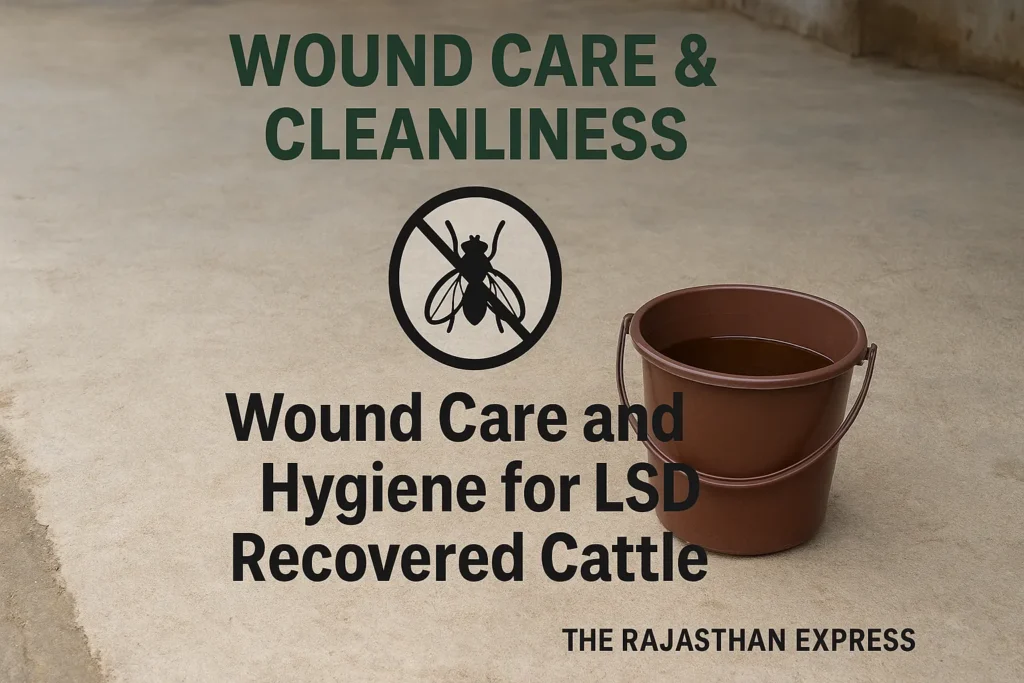
💊 Immunity Boosting Components (Immunomodulators)
By including some special components in the animal’s diet, its disease resistance capability can be naturally strengthened.
| 💊 Immunity Boosting Components (Immunomodulators) | |||
| Category | Immunomodulator | Main Mechanism & Effect | Examples & Research Findings |
|---|---|---|---|
| Natural / Herbal | Yu Ping Feng Polysaccharides (YPF-P) A natural immunomodulator derived from a Traditional Chinese Medicine (TCM) formulation. | Increases serum antibody levels; regulates CD4+/CD8+ ratio; enhances both Humoral and Cell-Mediated Immunity. | Improves survival in pigs, growth in poultry, and milk yield in cows; acts as a vaccine adjuvant. Source: Frontiers in Veterinary Science, 2024 |
| Natural / Herbal | Ashwagandha Root Extract (Withania somnifera) – also called Indian Ginseng or Winter Cherry. Contains Withanolides, Alkaloids, and Saponins. | Reduces cortisol (stress hormone); increases immune cells (TEC, TLC); has strong antioxidant and adaptogenic properties. | Improves stress tolerance in horses; enhances immunity and resilience. Source: Journal of Ethnopharmacology, 2020 |
| Natural / Herbal | Other Plant Polysaccharides (e.g., Astragalus) | Regulates cytokine expression (IL-1β, IL-2, IFNγ); promotes macrophage and lymphocyte proliferation. | Improves antibody response in poultry vaccines (Newcastle Disease, Avian Influenza). Source: Frontiers in Immunology, 2021 |
| Natural / Herbal | Chinese Herbal Mixture (CHMM) Polyherbal TCM formulation typically including Astragalus, Licorice (मुलेठी), Angelica, and Ginseng extracts. | Upregulates immune genes (NF-κB, TNF-α, IFN-β); enhances antioxidant enzyme activity. | Increases immune response and antiviral resistance in Rainbow Trout. Source: Aquaculture Research, 2022 |
| Probiotics & Microbiota-Targeted | Specific Probiotic Formulation Examples: Lactobacillus, Bifidobacterium, Enterococcus | Improves gut health and strengthens immune regulation via microbiota modulation. | Enhances antibody response in animals; reduces gut infections. Source: Frontiers in Microbiology, 2019 |
| Probiotics & Microbiota-Targeted | Microbiota-Targeted Feed Additives (Prebiotics + Probiotics + Herbal combinations) | Balances beneficial gut bacteria; promotes systemic immunity through microbiota–immune axis. | Improves vaccine efficacy (e.g., Rabies in mice). Source: Frontiers in Microbiology, 2019 |
| Pharmaceuticals | Glucocorticoids | Suppresses cell-mediated immunity; inhibits pro-inflammatory cytokines (IL-1, IL-2, IL-6, TNFγ). | Used for autoimmune disorders and organ transplant rejection. Source: Veterinary Pharmacology (Giguère et al., 2018) |
| Pharmaceuticals | Cytostatic Drugs (e.g., Cyclophosphamide) | Inhibits cell division; exhibits strong immunosuppressive properties. | Used in Systemic Lupus Erythematosus and Autoimmune Hemolytic Anemia. Source: Merck Veterinary Manual, 2023 |
| Pharmaceuticals | Levamisole | Activates both Th1 and Th2 immune pathways; boosts macrophage and T-lymphocyte activity. | Improves vaccine response and disease resistance in cows, sheep, and poultry. Source: Veterinary Immunology and Immunopathology, 2014 |
| Nutritional / Vitamins | Vitamin C (Ascorbic Acid) | Powerful antioxidant; neutralizes ROS; enhances neutrophil function and antibody production. | Reduces heat stress in poultry and calves; strengthens immunity. Source: Journal of Dairy Science, 2011 |
| Nutritional / Vitamins | Vitamin E (α-Tocopherol) | Prevents lipid peroxidation; protects cell membranes; enhances cytokine and antibody production. | Increases disease resistance in poultry; reduces mastitis in dairy cows. Source: Poultry Science, 2018; Journal of Animal Science, 2013 |
| The Rajasthan Express : Natural and Scientific Immunomodulators in Veterinary Practice | |||
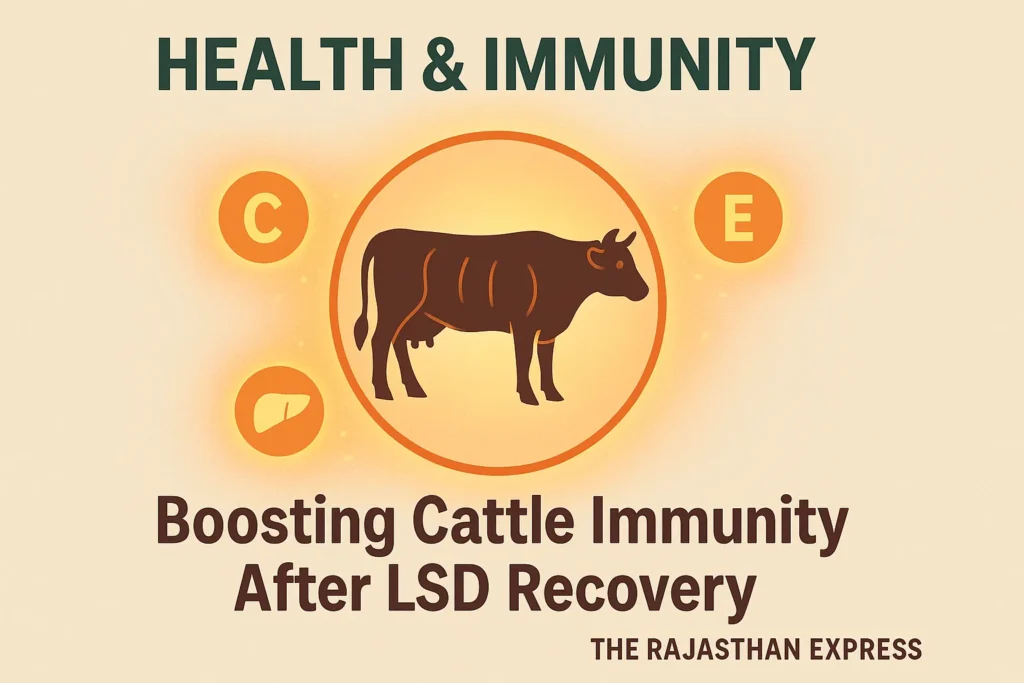
Deworming on Time
Internal parasites (stomach worms) have a profound negative impact on the animal’s health and productivity. These parasites live in the animal’s intestines, liver, and lungs and consume a large portion of its nutrition themselves, as a result of which the animal becomes weak, its physical growth stops, and milk production decreases.
Symptoms: The animal becoming lean-thin, lethargy, rough hair, anemia (lack of blood), diarrhea, and sometimes worms visible in the feces.
Control Measures: Regular deworming should be done four times a year. That is 1 year = 12 months: 3 X 4 = 12 months, meaning deworm the animal every 3 months. Different medicines can be used for different types of parasites, such as Triclabendazole or Clorsulon for liver fluke, and Praziquantel for tapeworm.
Management: Prevent animals from grazing in contaminated pastures and always deworm a new animal before introducing it to the herd.
Conclusion: Navigating the Long-Term Effects of LSD on Cow Milk Production
Key Takeaways for a Full Recovery
When integrating all these measures, the following points should be kept in mind:
- Start Gradually: Start new supplements or deworming only after assessing the animal’s current strength and health condition.
- Main Diet is the Foundation: Immunomodulators and supplements are only complementary; high-quality green fodder, balanced concentrate, minerals, and clean water must remain the main foundation.
- Consult a Veterinarian: In the case of pregnant or newborn animals, always consult a veterinarian before starting any new medicine or treatment.




Final Summary and Action Plan
Increasing the milk production of an animal recovering from Lumpy Skin Disease is a gradual process that requires patience and regular care.
- Immediate Action: After confirming the animal is fully healthy, start by increasing the amount of nutrients and energy in its diet.
- Long-Term Plan: Keep an eye on the animal’s overall health and production level. Continue balanced diet and good care regularly.
- Consult a Veterinarian: For any new diet plan or health-related concern, always consult your local veterinarian.
- Prevention is the Biggest Remedy: The most effective way to control LSD is vaccination. Also, immediately separate the sick animal from healthy animals and pay special attention to the cleanliness of the cattle shed.
How to increase milk production in LSD recovered cow/buffalo? Get the most effective nutritional management, diet plan, and long-term milk yield restoration strategies. Improve milk quality now.
THE RAJASTHAN EXPRESS
